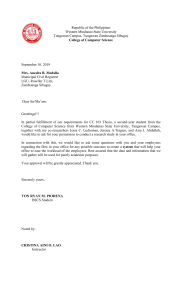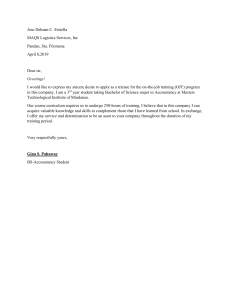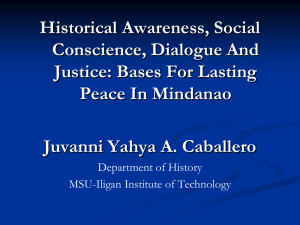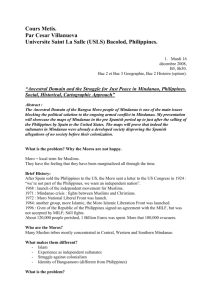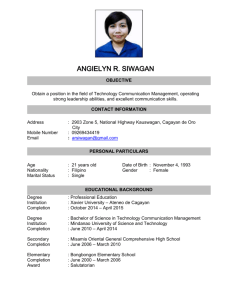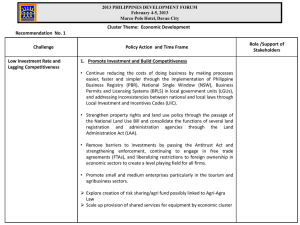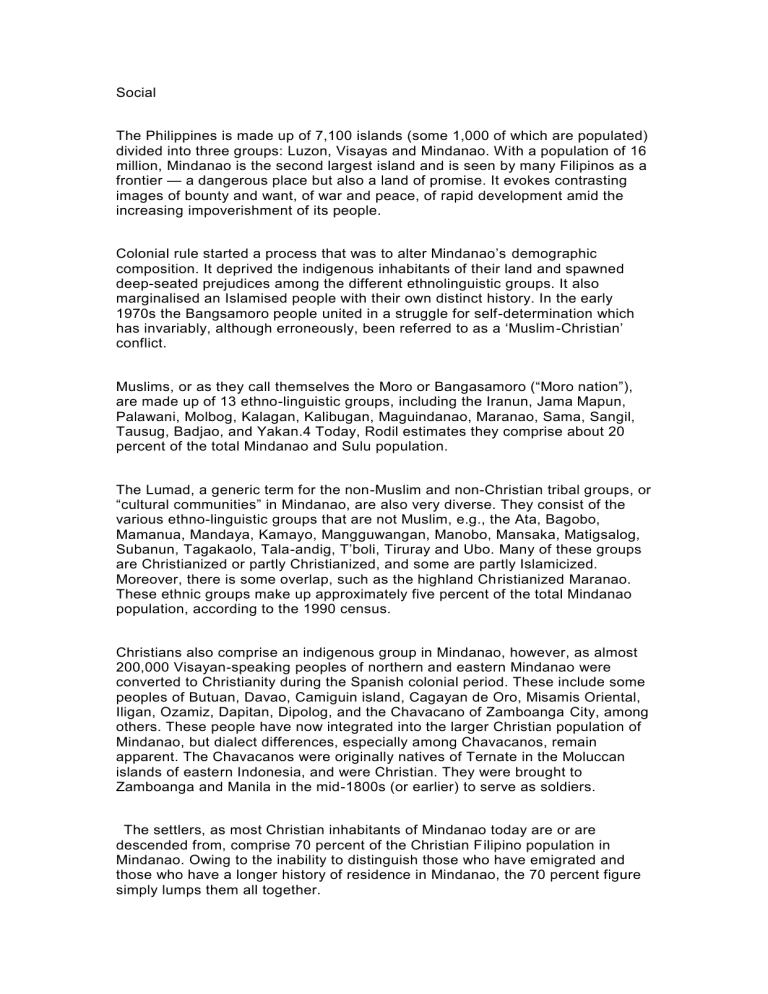
Social The Philippines is made up of 7,100 islands (some 1,000 of which are populated) divided into three groups: Luzon, Visayas and Mindanao. With a population of 16 million, Mindanao is the second largest island and is seen by many Filipinos as a frontier — a dangerous place but also a land of promise. It evokes contrasting images of bounty and want, of war and peace, of rapid development amid the increasing impoverishment of its people. Colonial rule started a process that was to alter Mindanao’s demographic composition. It deprived the indigenous inhabitants of their land and spawned deep-seated prejudices among the different ethnolinguistic groups. It also marginalised an Islamised people with their own distinct history. In the early 1970s the Bangsamoro people united in a struggle for self-determination which has invariably, although erroneously, been referred to as a ‘Muslim -Christian’ conflict. Muslims, or as they call themselves the Moro or Bangasamoro (“Moro nation”), are made up of 13 ethno-linguistic groups, including the Iranun, Jama Mapun, Palawani, Molbog, Kalagan, Kalibugan, Maguindanao, Maranao, Sama, Sangil, Tausug, Badjao, and Yakan.4 Today, Rodil estimates they comprise about 20 percent of the total Mindanao and Sulu population. The Lumad, a generic term for the non-Muslim and non-Christian tribal groups, or “cultural communities” in Mindanao, are also very diverse. They consist of the various ethno-linguistic groups that are not Muslim, e.g., the Ata, Bagobo, Mamanua, Mandaya, Kamayo, Mangguwangan, Manobo, Mansaka, Matigsalog, Subanun, Tagakaolo, Tala-andig, T’boli, Tiruray and Ubo. Many of these groups are Christianized or partly Christianized, and some are partly Islamicized. Moreover, there is some overlap, such as the highland Christianized Maranao. These ethnic groups make up approximately five percent of the total Mindanao population, according to the 1990 census. Christians also comprise an indigenous group in Mindanao, however, as almost 200,000 Visayan-speaking peoples of northern and eastern Mindanao were converted to Christianity during the Spanish colonial period. These include some peoples of Butuan, Davao, Camiguin island, Cagayan de Oro, Misamis Oriental, Iligan, Ozamiz, Dapitan, Dipolog, and the Chavacano of Zamboanga City, among others. These people have now integrated into the larger Christian population of Mindanao, but dialect differences, especially among Chavacanos, remain apparent. The Chavacanos were originally natives of Ternate in the Moluccan islands of eastern Indonesia, and were Christian. They were brought to Zamboanga and Manila in the mid-1800s (or earlier) to serve as soldiers. The settlers, as most Christian inhabitants of Mindanao today are or are descended from, comprise 70 percent of the Christian Filipino population in Mindanao. Owing to the inability to distinguish those who have emigrated and those who have a longer history of residence in Mindanao, the 70 percent figure simply lumps them all together. During American colonial rule, the Moro and Lumad Filipinos were categorized and administered separately as the Moro and Wild Tribes, as opposed to members of the “civilized” Christian majority. In 1957, the Philippine government formally declared that non-Christian Filipinos would be called the National Cultural Minorities. Later, as Dr. Rodil notes, the Constitutions of 1973 and 1987 re-labeled them respectively as “Cultural Communities” and then “Indigenous Cultural Communities”. The fact that all of these people are indigenous remains the enduring enigma of this kind of ethno-linguistic categorization. There are at least 13 ethnolinguistic groups indigenous to Mindanao that have adopted Islam as a way of life. The three largest and politically dominant are the Maguindanaon (people of the flooded plains) of the Cotabato provinces (Maguindanao, Sultan Kudarat, North and South Cotabato); the Maranaw (people of the lake) of the two Lanao provinces; and the Tausug (people of the current) of the Sulu archipelago. The remaining ten are the Yakan, Sama, Badjaw, Kalagan, Sangil, Iranun or Ilanun, Palawani, Melebugnon, Kalibogan and Jama Mapun. There is also a growing number of Muslim converts from various ethnolinguistic groups all over the Philippines. In the Philippines, the terms ‘Muslim’ and ‘Moro’ have been used interchangeably to refer to the various ethnolinguistic groups. Whereas the term ‘Muslim’ refers to a universal religious identity, the term ‘Moro’ denotes a political identity distinct to the Islamised peoples of Mindanao and Sulu. The Spanish colonisers originally used the term for peoples of Mindanao who shared the religion of the Moors who had once colonised Spain. The term ‘Moro’ was used in the same derogatory way as the epithet ‘Indio’ for Filipinos whom they converted to Christianity.

